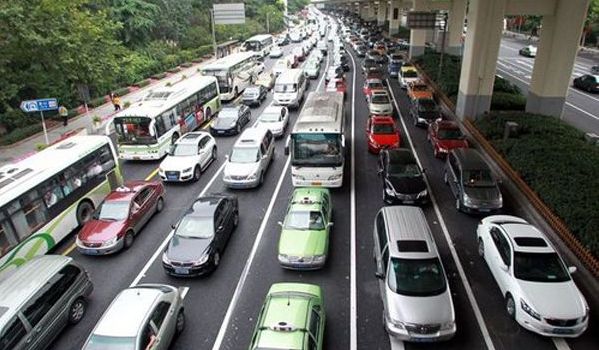Shanghai to adopt China V emission standard
 0 Comment(s)
0 Comment(s) Print
Print E-mail Shanghai Daily, April 3, 2014
E-mail Shanghai Daily, April 3, 2014
Shanghai will become the second city in the country after Beijing to introduce the China V emission standard for new vehicles starting from April 30.
 |
|
Shanghai will become the second city in the country after Beijing to introduce the China V emission standard for new vehicles starting from April 30. |
Beijing was the first to put the standard into effect in March 2013.
Vehicles failing to meet the strict new standard cannot be registered.
There are around 30,000 new cars in the retail outlets that are conditioned for China IV emission standard. These cars cannot be sold from May 1 with the vehicles most likely moved to neighboring cities and provinces.
The new standard aims to curb the number of old vehicles on the road and enforce a higher emission level for new vehicles in the city. Vehicles meeting China V standard will have lower nitrogen oxide, carbon monoxide and hydrocarbon emission.
According to Shanghai Environmental Protection Bureau, vehicles under the new emission standard will cut nitrogen oxide by 25 to 43 percent compared to the previous standard. All vehicles lighter than 3.5 ton, and those used in public transportation, sanitation and postal service, have to follow the new standard. Petrol stations around the city have been selling gasoline and diesel that meet the China V emission since November. The bureau said it will reduce emission by 8 percent.
Shanghai will also ban the yellow-label, or heavily polluting vehicles, on and within the Outer Ring Road (S20) starting from July 1. Drivers caught violating the regulation will receive a 3-point deduction on their license and fined 200 yuan (US$32.23).
The city's traffic authority also plans to extend the restricted area for heavily polluting vehicles to the suburban loop (A30) in the first half of next year.
Shanghai has around 120,000 yellow-label cars that will be forced out of the roads. According to a national plan, all heavily polluting cars in China will be done away with by the end of 2017.
Owners who dump their polluting cars now receive 6,000 yuan as compensation from the city government. This is part of the central government's multi-pronged approach to tackle the country’s poor air condition. Other methods include promoting the transformation and upgrading of industries, and further tightening of high-polluting and energy-intensive industries.





